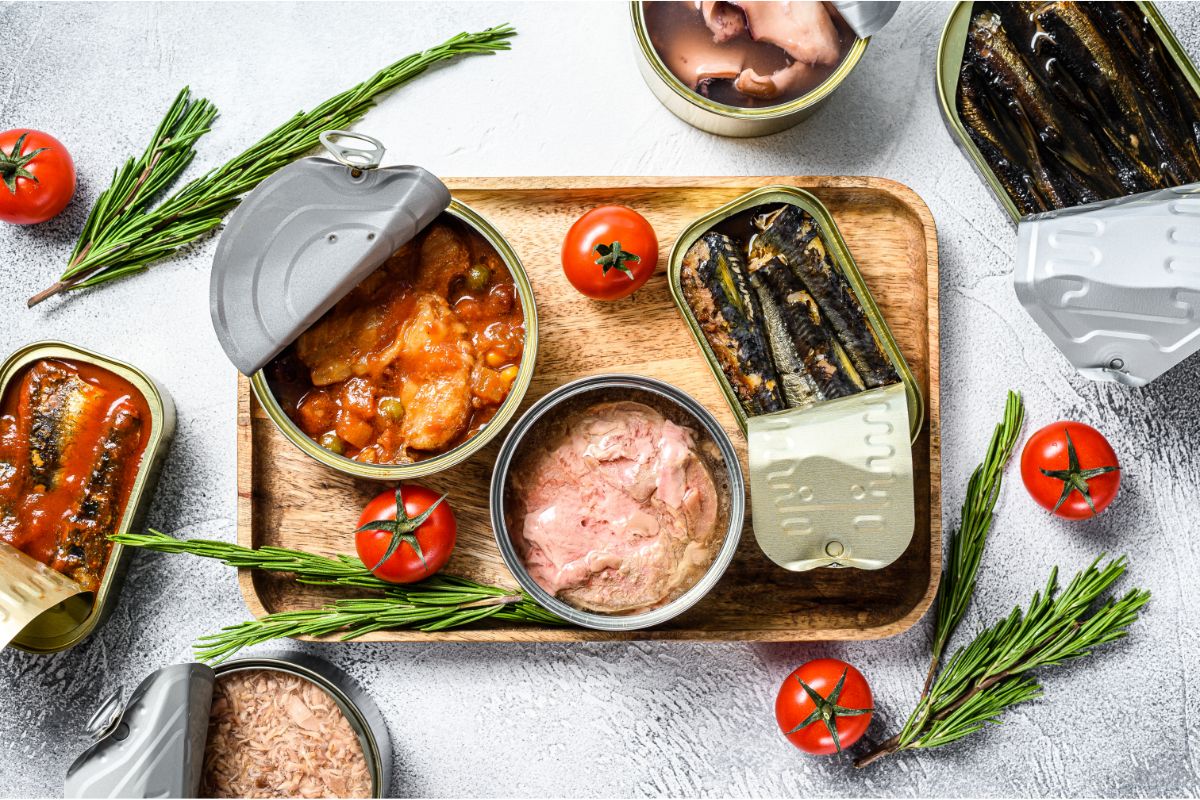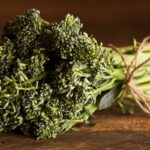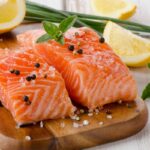Canned salmon definitely doesn’t get the love that it deserves. Not only is it super scrumptious and sure to excite any seafood lover, but it also has countless benefits when you consume it!

The wild-caught and typically boneless and skinless salmon found in a can is one of the best sources of protein around, and it also includes a ton of vitamins and minerals along with those much needed omega-3 fatty acids.
Omega-3 has been linked to a reduction in heart disease, strokes, and many other medical conditions – so canned salmon definitely has its health benefits.
And if all this wasn’t enough, it’s also such a quick and convenient option. So no more slaving away at a stove for hours. And isn’t that the dream? It also makes a great addition to most meals. It goes perfectly on a pizza, salad, or even a pasta dish.
So, why then, do many people seem to avoid canned salmon? Maybe it’s because they’re just not quite sure of it. And it can be a little ambiguous. Most people are actually unsure if it’s even cooked or not.
That’s why I thought I’d create this handy guide to put people’s minds at ease. We’ll answer all the questions that might make you apprehensive so that you can start enjoying this super tasty and healthy treat.
Shall we get straight to it?
Is Canned Salmon Cooked Already?
Generally, canned salmon is precooked before it is packaged and placed in the can. So, technically, yes, you can say that it is cooked. Although, things get a little more complicated when you take into consideration the different varieties of canned salmon available.
For example, canned salmon that is packed in water or sauce may not be heated during the canning process and so technically won’t be cooked.
For the most part, though, it is cooked. This is done via a technique known as retort cooking. What does that mean?
Well, essentially the salmon is sealed in an airtight container before it is then exposed to a high temperature for a protracted period of time. This means that the salmon has been cooked and is safe for consumption.
This cooking process often results in a softer and milder salmon than you may be used to with its fresh counterpart. Some individuals prefer this, and I would definitely recommend it.
But it’s important to know so that you have the right expectations since you won’t get that traditional texture of flavor when it is purchased from a can.
Is It Safe To Eat Canned Salmon From The Can?

Okay, so if canned salmon is cooked, is it safe to eat straight from the can? Yes, it can be, but you’ll still want to be cautious. This is because canned salmon can become unsafe to eat in certain circumstances.
Take a look at the three important things to be aware of before diving your fork straight into the can.
- How Long It’s Been Sitting – You’ll want to ensure that your salmon is definitely cooked. If your canned salmon has been long neglected in the back of a cupboard and it’s been quite a while, there’s a chance it’s not safe to consume.
- Expiration Date – Always check the expiry date on the can before you consume canned salmon. If it has passed its expiry date then it definitely won’t be safe for consumption.
- Smell Test – It’s always a good idea to give your salmon a good whiff before you commit to eating it. If it has an overwhelmingly fishy scent or it just smells off, then it’s best not to consume it as it may not be safe.
However, if you’ve recently purchased your salmon then you should be absolutely fine to dig in!
How To Prepare Canned Salmon?
Canned salmon is a super quick and easy option, so it’ll probably come as no surprise that preparing and eating canned salmon is not a laborious task. Let’s take a look at how you should go about it.
- Drain – The first thing you’ll want to do is open your can and drain out any of the excess liquid.
- Flake – Next, using a fork you’ll want to flake the salmon into smaller bite-sized pieces.
- Add – This step isn’t necessary, but you can add extra ingredients at this point such as peppers, celery, or onions which will enhance the flavor.
- Serve – And as easy as that it’s ready to serve. You can pop it on a salad, into a pasta dish, or any other meal you’d prefer.
What Can You Eat With Canned Salmon?
The beauty of canned salmon is that it is super versatile. You can eat it any which way you’d like, really. More often than not, it’s eaten straight out of the can. But there are definitely ways to incorporate it into other meals to make a delicious dish.
One of my favorite ways to eat salmon is to combine it with diced onion and celery along with mayonnaise and then spread that mixture onto toasted bread.
Alternatively, you can add it to a mixed bowl of cooked quinoa, diced avocado, and a vinaigrette or dressing to make a scrumptious salad.
For something a little more filling, you can add potatoes and your favorite veggies to a plate and serve them beside salmon. Or you could make a hearty and filling pasta dish and add some salmon to the mix.
There are no rules when it comes to food, the world is your oyster. Go nuts. Whatever sounds good to you…try it. There’s nothing wrong with a little experimentation.
What Variety Of Canned Salmon Is The Safest?
If, even after reading this much, you’re still a little unsure about salmon, why not opt for the very safest option? That will be sure to give you some peace of mind. And when it comes to canned salmon there are plenty of options to choose from…it can all get a little overwhelming.
In terms of the safest option, you’ll probably be best opting for wild-caught salmon that is packaged in BPA-free cans. This type of fish is often less exposed to harmful toxins and a BPA-free can reduce exposure to nasty chemicals too.
When it comes to taste and texture, sockeye or pink salmon are probably the best bets. Sockeye is best for those looking for a very rich and flavorful flesh while pink salmon will be better suited to those that prefer their salmon slightly on the sweeter side.
Frequently Asked Questions
Usually, it’ll be pretty obvious if your salmon isn’t good to eat. When salmon has gone bad it tends to discolor or produce an unpleasant odor. If you notice either of these with your canned salmon it is best to discard it immediately.
And remember, if you’re ever unsure it is always better to err on the side of caution rather than make yourself sick.
You may assume that canned salmon is overly processed meat that barely resembles salmon, but this actually isn’t true. Canned salmon is made from wild-caught fish that is cooked and then packaged in a can.
While it usually will not contain the skin or bones of the fish, and as a result may not be quite as healthy as fresh salmon, it is still salmon. And still a nutritious and healthy option at that.
While salmon is healthy and nutritious, it should still be eaten in moderation. According to the FDA, it is recommended that seafood is incorporated into your diet twice a week.
However, since canned salmon often includes added salt for flavor, you don’t want to eat it too often or you may consume more than your recommended sodium intake.
Final Thoughts
Canned salmon is super delicious and it’s also really nutritious. So it’s a win all round. But it often doesn’t get the attention it deserves since a lot of people aren’t really sure if it’s cooked or how it should be used in dishes.
But as you’ve learned from this article, canned salmon is cooked and it’s literally one of the easiest things to prepare in the world. I’ll never stop singing the praises of canned salmon – it’s just amazing in all senses.
You can literally eat it straight from the can if you want to, but if you’re adding it to other meals all you need to do is drain the liquid from the can and flake it apart with a fork and voila, you’re all set to go.
So, if you haven’t before now, definitely pick up some canned salmon the next time you’re at the grocery store and try out this nutritious tasty snack for yourself!
- How To Reheat A Cheesesteak - November 5, 2023
- What Are Three Must Have Kitchen Knives? - September 22, 2023
- How To Protect Edges Of Pie Crust - June 15, 2023








